Content
Chubushnik and jasmine are two striking representatives of flower garden shrubs, widely used by many fans of ornamental gardening. Inexperienced growers often confuse these two plants. However, if you look at it, these shrubs have much more differences than similarities. The difference between chubushnik and jasmine is not only in the name. More details about this will be discussed later.
What is the difference between jasmine and chubushnik
The similarity of these two ornamental plants is that their flowers often have the same white color and emit a similar sweet-floral scent. This is the reason that many gardeners consider the mock-orange to be a kind of garden variety of jasmine. However, this opinion is deeply mistaken.
The flowers of these two shrubs are really similar, but only at first glance. And not all varieties of chubushnik differ in a pronounced floral sweet aroma characteristic of all varieties of jasmine.
The difference between jasmine and chubushnik is also that the wood of the second shrub is much harder. Previously, it was used to make smoking pipes - shanks, from which the modern Russian name of this plant originated. The jasmine stem is much more flexible and soft, it woods only with age, and rather slowly.
By description
To understand the main differences between jasmine and mock orange, it is enough to study their biological description. Comparative characteristics of these two biological species and their main differences are shown in the table below:
Characteristic | Chubushnik | Jasmine |
Shrub type | Deciduous | Evergreen |
Family | Hydrangea | Olive |
Number of species | About 200 | About 60 |
Stem | Erect | Erect, climbing or curly |
Height of an adult bush | Depending on the variety, from 1 to 4 m | 2-3 m |
Leaves | Green, simple, ovoid, oval or elongated, with short petioles | Green, simple, trifoliate or pinnate, with short petioles |
Bark | Gray, on shoots older than 1 year, brown, flaking | Green |
Flowers | Large, simple, semi-double or double, white, cream or yellowish, collected in carpal inflorescences of 3-9 pcs. | Large, regular, white, yellow or pink, with a narrow tubular corolla collected in corymbose inflorescences |
Scent | Depends on the species, some are completely odorless. The scent does not depend on the time of day | Strong with pronounced sweet tones. Appears after sunset |
By flowering
Chubushnik blooms in June-July, the average flowering time is about 3 weeks. In jasmine, the time of flower appearance depends on its variety. The flowering period for most species of this plant begins between March and July and ends in late September and early October. In addition, there is a holo-flowered (winter) jasmine that blooms at the end of January and ends flowering at the end of April.
By habitat
Jasmine (pictured below) is a striking representative of the tropical and subtropical belt, it is found in both hemispheres of the Earth. It is widespread in South and South-West Asia, the countries of the Middle East. In Russia, in its wild form, this plant is found only in the Caucasus and Crimea.
Unlike jasmine, the chubushnik shrub has a different growing area, it grows in Europe, East Asia, North America.The natural zones of distribution of these two shrubs differ significantly, almost without intersecting with each other.
Are there any similarities between chubushnik and jasmine
The reason why chubushnik is sometimes called garden or false jasmine is the delicate scent of flowers of some of its species. It really closely resembles the scent of jasmine flowers. In addition, there is an external similarity between the flowering bushes of both plants, especially if you look at them at a short distance. Both representatives of ornamental gardening are a wonderful decoration of the garden, but they still have more differences than similarities.
How to distinguish jasmine from chubushnik
When choosing planting material, you need to be very careful, since confusion with names exists even in specialized flower shops and nurseries. It is imperative to clarify the Latin name of the seedling, the name Philadélphus will unambiguously indicate that this is a mock-orange seedling, even if in the store it is called, for example, garden jasmine, northern or false jasmine. The real one has the Latin name Jasmínum.
The flowering bushes of these two ornamental plants are most easily distinguished by their flower structure. The jasmine flower has a characteristic tubular corolla from which two stamens grow. Chubushnik flowers have a different shape. They represent a goblet cup, consisting of 4, sometimes 5-6 petals. Inside there are about 20-25, and in large-flowered varieties - up to 90 stamens. The photo below shows how the flowers of jasmine and chubushnik differ.
In the first photo there is a jasmine flower, in the second - a mock orange, all the differences are very clearly visible.
Unlike real jasmine, garden jasmine, or mock-orange, is much more winter-hardy. This is due to the fact that the natural area of its growth is located much to the north. During winter, the tips of its shoots often freeze slightly, but the plant recovers rather quickly. In many regions of Russia, it can grow year-round outdoors, while jasmine can be used only as an ampelous plant or planted in closed areas with artificial climate control.
An interesting video about the intricacies of growing chubushnik in Russia:
Conclusion
The difference between chubushnik and jasmine is really very serious, the plants belong to different families and require different care. However, both shrubs are a great way to decorate your infield. However, if the mock-orange in many regions can be grown outdoors, then the much more thermophilic jasmine is suitable only for indoor greenhouses, summer gardens and other structures with a controlled microclimate.

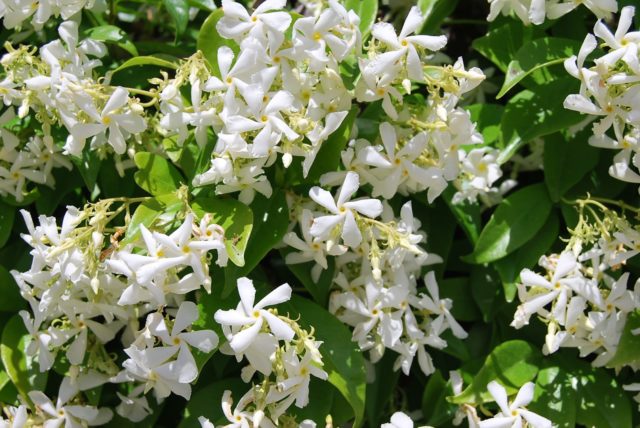
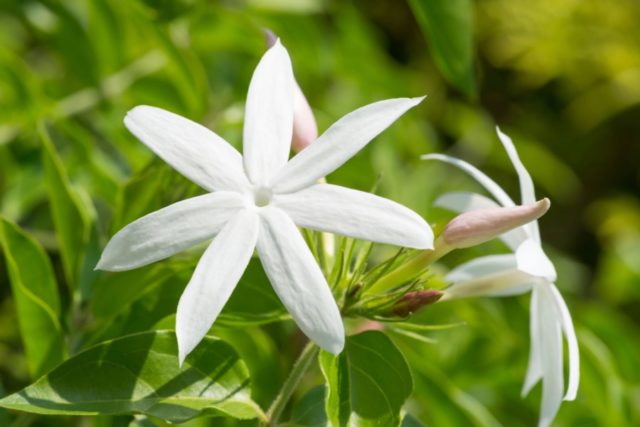

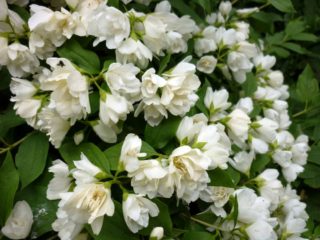
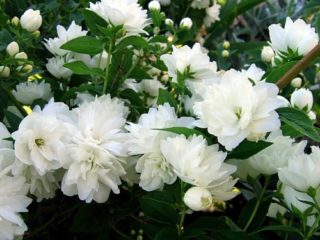

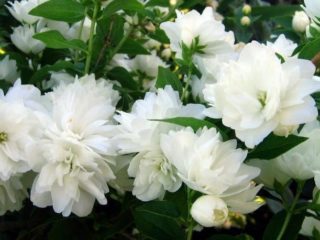
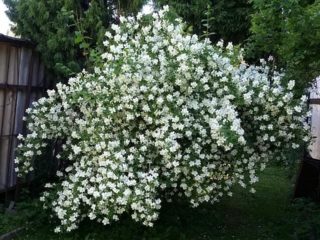



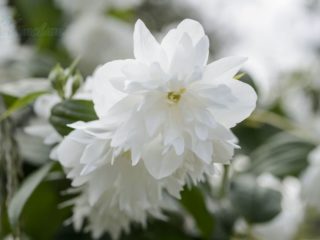
are chubushnik flowers useful in tea
Good day!
Chubushnik flowers have useful properties. They are often used to brew tea, which has a healing effect on the body. It is worth knowing that not all varieties of chubushnik are suitable for this purpose. And it is important to correctly collect and dry the flowers so that they retain their beneficial properties. Fresh flowers can also be used for this purpose.
You can brew tea with chubushnik flowers either separately or in combination with green, black tea or other herbs.
However, there are contraindications.Do not drink tea with mock-orange flowers:
• with an ulcer, gastritis;
• during pregnancy and hepatitis B;
• hypotension;
• with individual intolerance;
• if you have kidney disease.
It is undesirable to drink tea with garden jasmine flowers in the evening, as it has tonic properties.